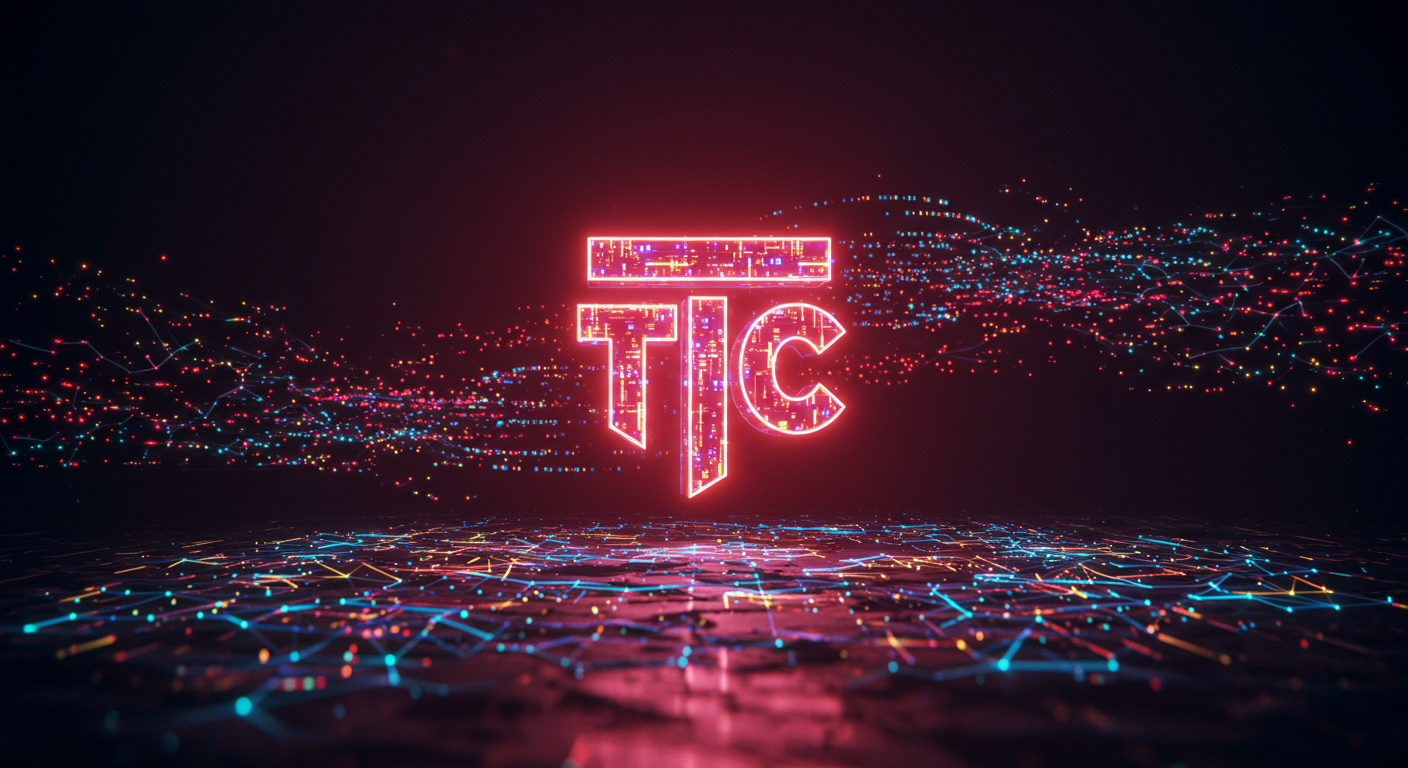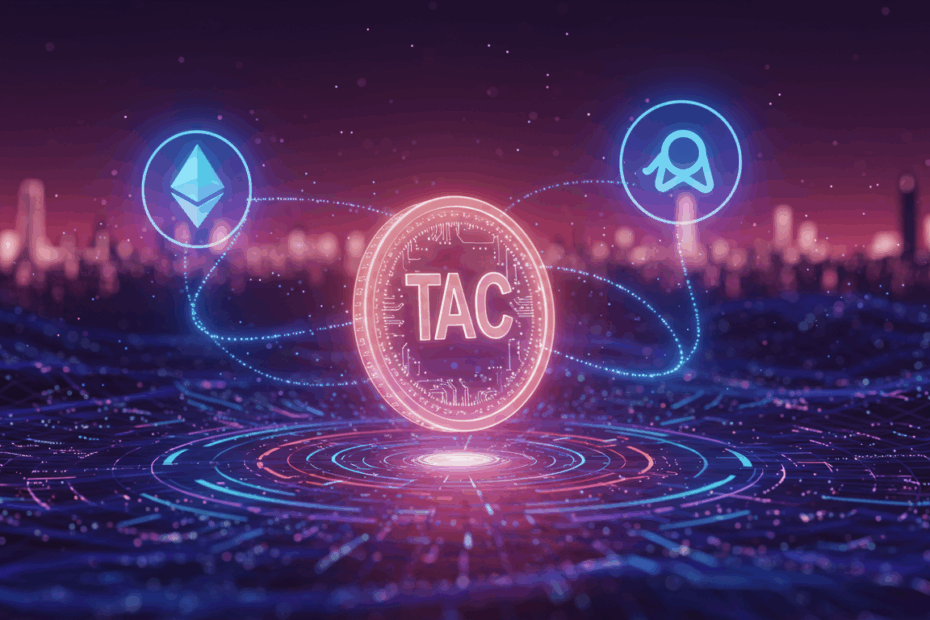The Bridge Is Live: Unpacking the TAC Mainnet, DeFi, and the Quest to Win Over Telegram
John: Well, Lila, if you’ve been watching the crypto space this week, you’ve likely seen three letters popping up everywhere: T-A-C. The big news, which has been lighting up feeds from Cointelegraph to The Defiant, is that the TAC public mainnet is now live. This isn’t just another incremental update; it’s a significant move aiming to fundamentally change how a billion people interact with decentralized finance.
Lila: Okay, John, I’ve definitely seen the headlines. “TAC Mainnet Launch,” “$TAC Token Debuts,” “Ethereum DeFi comes to Telegram.” It’s a lot to take in. For our readers who are maybe just dipping their toes into the Metaverse and Web3, can you break down what a “mainnet launch” actually means? Is it like a new app going live?
John: That’s a great analogy. Think of it like this: for months, or even years, developers have been building a new highway system in a closed-off area. This is called the “testnet.” They run test cars, check for potholes, and make sure all the signs are right. The mainnet launch is the grand opening. The barriers are removed, and for the first time, real traffic—real users and real money—can use the highway. For TAC, this means their blockchain is now fully operational, processing real transactions and supporting live applications.
Lila: A highway for crypto. I like that. So, what is this TAC highway connecting? The headlines keep mentioning Ethereum and Telegram, which feel like two completely different worlds.
John: Exactly. And that’s the core of what makes this so interesting. TAC, which stands for TON Application Chain, is designed to be a bridge, a superhighway, between two of the largest ecosystems in the digital world: Ethereum, the powerhouse of Decentralized Finance (DeFi), and Telegram, the messaging giant with over a billion users. It’s an attempt to solve one of the biggest problems in crypto: distribution.

What Is TAC and Why Does It Matter?
Lila: Distribution? You mean getting crypto apps into the hands of everyday people, not just the tech-savvy crowd?
John: Precisely. Ethereum has all of these incredible, battle-tested DeFi protocols—think of them as automated, transparent financial services like lending, borrowing, and trading. We’re talking about giants like Curve, Morpho, and Euler. But using them often requires a certain level of technical know-how: setting up a specific type of wallet, managing complex transactions, and navigating a user experience that can be… intimidating for newcomers.
Lila: I can vouch for that! My first time trying to use a DeFi app felt like I needed an engineering degree. So many pop-ups, confirmations, and strange terms.
John: You’re not alone. On the other hand, you have Telegram. It’s an app that a huge portion of the planet already uses every day. It’s simple, intuitive, and a part of their daily routine. The TON blockchain (The Open Network) is deeply integrated with Telegram, creating a fertile ground for “mini-apps” that run right inside the messenger. What TAC does is build a purpose-built blockchain that allows those powerful Ethereum DeFi applications to be deployed and accessed seamlessly within the TON and Telegram ecosystem.
Lila: So, you’re saying I could, theoretically, lend out some crypto or trade tokens from an app running inside my Telegram chats? Without the usual headache?
John: That is the exact promise. As Blockworks put it, TAC offers a pragmatic bridge for blue-chip Ethereum DeFi apps to deploy to Telegram’s user base. It aims to lower the barrier to entry so dramatically that engaging with DeFi becomes as easy as sending a sticker to a friend. This is a potential game-changer for mass adoption.
The $TAC Token: Supply and Utility
Lila: Okay, the concept of bridging these two worlds makes sense. But with any new crypto project, there’s always a token involved. I see “$TAC Token Debuts in TVL” in the headlines. Let’s talk about the money. What is the $TAC token, and what does it do?
John: A crucial question. The $TAC token is the native currency of the TAC blockchain. Like any blockchain’s native asset, it serves several key functions. Think of it as the fuel and the steering wheel of the network.
- Gas Fees: First and foremost, you need $TAC to pay for transactions on the network. Every action, whether it’s a simple token swap or a more complex interaction with a DeFi protocol, requires a small fee, known as “gas.” This fee is paid in $TAC and compensates the network validators for securing the chain.
- Staking and Security: TAC uses a Proof-of-Stake (PoS) consensus mechanism. This means that instead of using massive amounts of electricity like Bitcoin (Proof-of-Work), the network is secured by validators who “stake” or lock up a significant amount of $TAC tokens as collateral. They are rewarded for good behavior and penalized for malicious actions, which keeps the network honest.
- Governance: Holding $TAC tokens will also grant you voting rights on the future of the network. Token holders can propose and vote on changes, such as protocol upgrades or adjustments to network parameters. It’s a way to decentralize control and give the community ownership over the project’s direction.
Lila: So it’s not just a speculative asset to trade, it has real jobs to do within the ecosystem. You mentioned “TVL.” Can you unpack that acronym for us?
John: Of course. TVL stands for Total Value Locked. It’s one of the most important metrics in DeFi. It represents the total amount of assets (in US dollar value) that are currently deposited into a specific DeFi protocol or across an entire blockchain. When a headline says the “$TAC token debuts in TVL,” it means that not only is the token being traded, but it’s also being locked up and used within the new DeFi applications that have just launched on the TAC mainnet. A rising TVL is a strong indicator of growing trust and utility in a new ecosystem.
Lila: And where can people find this token? The news mentioned it was listed on some big exchanges.
John: That’s right. A successful launch often requires immediate liquidity and accessibility. The team behind TAC secured listings on several top-tier exchanges right out of the gate, including Bybit, Bitget, and Kraken, with outlets like mpost.io even mentioning a listing on Binance Alpha. This makes it easier for users, developers, and investors to acquire the token needed to interact with the new mainnet.
The Tech Under the Hood: How Does It All Work?
Lila: This is the part that always feels a bit like magic to me. How does a blockchain actually connect two different systems like Ethereum and TON? The search results mention things like “CosmosEVM,” “EVM-compatible,” and “TON-Adapter.” It sounds like a tech-soup.
John: It can definitely sound complex, but let’s break it down into its core components. It’s less like magic and more like clever engineering with different, specialized tools.
- EVM Compatibility: This is the most critical piece of the puzzle. EVM stands for the Ethereum Virtual Machine. Think of it as the operating system for Ethereum. All the smart contracts and dApps on Ethereum are written to run on this specific OS. By being “EVM-compatible,” TAC essentially creates a perfect replica of this operating environment. This means developers with an existing Ethereum app don’t need to rewrite their entire code. They can copy-paste their application and deploy it directly onto TAC with minimal changes. It’s like an adapter that lets you run your Windows program on a Mac without any fuss.
- Cosmos SDK: While the EVM provides the “operating system” for the apps, the blockchain itself needs a foundation. TAC is built using the Cosmos SDK (Software Development Kit). The Cosmos SDK is a popular framework for building custom, sovereign blockchains. It’s like a highly advanced Lego kit for developers. It provides the standard components—like networking, consensus, and staking modules—allowing the TAC team to focus on building the unique features they need, rather than reinventing the wheel.
- The TON-Adapter: This is TAC’s special sauce. This is the custom-built technology that creates the seamless link to The Open Network and, by extension, Telegram. It allows what the team calls “Hybrid dApps.” These are applications that can leverage the security and liquidity of Ethereum-based assets while simultaneously tapping into TON’s native features and Telegram’s user interface elements. This adapter handles the communication between the two distinct blockchain environments, making them feel like a single, unified system to the end-user.
Lila: Okay, the Lego kit and universal adapter analogies are really helping! So, EVM-compatibility gets the Ethereum developers on board easily. The Cosmos SDK provides a solid, customizable foundation. And the TON-Adapter is the unique bridge that connects everything to Telegram’s front door. It’s a very deliberate combination of technologies.
John: Precisely. It’s a pragmatic approach. Instead of trying to force Ethereum developers to learn a whole new language or trying to build a user base from scratch, they are connecting two existing, thriving ecosystems. This strategy significantly de-risks the project and accelerates its potential for growth.

Team, Community, and Backing
Lila: A great idea is one thing, but execution is everything. Who are the people building this bridge? And what kind of support do they have?
John: The project is being developed by a team known as TOP Labs. While they maintain a relatively low profile, which is common in the crypto space, their work speaks for itself through their partnerships and technical execution. The more important factor for long-term success in a decentralized project is the ecosystem that forms around it. This includes developers, users, and financial backers.
Lila: And it seems they’ve done well on that front. I saw one article from Cointelegraph mentioning that TAC raised $11.5M to bring DeFi to Telegram’s billion-user ecosystem.
John: Yes, that funding round, which happened before the mainnet launch, was a major vote of confidence from the investment community. It provides the runway needed for development, marketing, and ecosystem incentives. But even more telling is the list of partners who committed to launching on the mainnet from day one. When you have established DeFi “blue-chips”—the most respected and widely used protocols—like Curve, Morpho, Bancor, Euler, and ZeroLend ready to go live, it signals a high level of trust in the technology and the team. These projects wouldn’t risk their reputation and their users’ funds on a platform they didn’t believe was secure and promising.
Lila: That makes sense. It’s like a new, high-end shopping mall opening, and on day one, Gucci, Prada, and Louis Vuitton are already there. It immediately tells you the mall is a serious contender.
John: An excellent metaphor. The community aspect is also crucial. Looking at their social channels, like their X (formerly Twitter) account @TacBuild, you can see an active and engaged community of tens of thousands of followers. In Web3, the community is not just a customer base; they are active participants, evangelists, and often co-builders of the ecosystem. A strong community is a powerful moat.
Use-Cases and the Future Outlook
Lila: We’ve touched on the main use-case: making DeFi accessible through Telegram. Could you paint a more detailed picture? What are some specific things people might be able to do on TAC in the near future?
John: Certainly. Let’s move from the abstract to the practical.
- Frictionless Yield Farming: Imagine you have some stablecoins (crypto pegged to the US dollar) sitting in a wallet. Through a mini-app in Telegram, you could deposit them into a Curve liquidity pool on TAC and start earning trading fees and token rewards, all with a few simple taps. No more connecting wallets to clunky web interfaces.
- Simplified Lending and Borrowing: You could use a protocol like Euler or ZeroLend on TAC to deposit an asset like ETH as collateral and borrow another asset against it, perhaps to take advantage of a trading opportunity, without ever leaving the Telegram app. The notifications for your loan health could even come as a direct message from a bot.
- Social Trading and Payments: The integration with a social platform opens up new possibilities. You could see a crypto expert you follow on a Telegram channel mention a new token. A mini-app could allow you to swap for that token right there in the channel. Or you could easily split a dinner bill with friends by sending crypto payments directly in your group chat.
- Gaming and NFTs: While the initial focus is DeFi, the infrastructure supports much more. We could see Web3 games that use Telegram as their social layer, with in-game assets and NFTs managed on the TAC chain.
Lila: That concept of “Hybrid dApps” you mentioned earlier really starts to click now. It’s about combining the financial power of one world with the user experience of another. What’s the long-term vision here? What does success look like for TAC five years from now?
John: The long-term vision is ambitious. Success isn’t just about having a few DeFi apps on Telegram. It’s about onboarding the *next billion users* into the open economy of Web3. Success would mean that “using DeFi” is no longer a niche activity for crypto enthusiasts. It would become a background utility, a financial layer seamlessly integrated into the digital tools people already use. TAC would become a critical piece of infrastructure, a bustling economic layer for the entire Telegram ecosystem, potentially processing millions of transactions daily for everything from gaming to finance to social media.

How Does TAC Compare to Competitors?
Lila: This sounds incredibly promising, but they can’t be the only ones trying to solve the problem of scaling Ethereum and making crypto easier to use, right? How does TAC fit into the broader landscape of, say, Ethereum Layer 2 solutions like Arbitrum or Optimism?
John: That’s a very sharp question, Lila. TAC is often discussed in the same breath as Layer 2s (L2s), but its approach is distinct.
- Layer 2s (e.g., Arbitrum, Optimism, Base): The primary goal of L2s is to scale Ethereum by processing transactions off the main chain and then posting a summary back to it. They inherit Ethereum’s security directly. Their main value proposition is cheaper, faster transactions for the existing Ethereum user base. While some, like Base (from Coinbase), have a distribution advantage, their integration is typically with a crypto-native exchange, not a global messaging app.
- TAC (as a Layer 1): TAC is a sovereign Layer 1 blockchain built with the Cosmos SDK. This means it has its own set of validators and its own security model. While this means it doesn’t directly inherit Ethereum’s security, it gives it far more flexibility and sovereignty to optimize specifically for its mission. Its key differentiator isn’t just cheaper transactions—it’s the deep, native integration with the TON/Telegram ecosystem via its custom adapter. It’s less about scaling Ethereum for its own sake and more about *extending* Ethereum’s applications to a completely new user base.
In essence, L2s are like adding more lanes to Ethereum’s existing highway. TAC is about building a brand-new highway that connects the Ethereum metropolis to the massive, previously unconnected continent of Telegram users.
Lila: So it’s less of a direct competitor to something like Arbitrum and more of a complementary piece of the broader “superchain” vision? A different path to the same goal of mass adoption?
John: Exactly. The future is likely multi-chain. There won’t be one chain to rule them all. Success will come from projects that can effectively bridge liquidity and users between these different chains. TAC’s bet is that the social layer, specifically Telegram, is the most powerful and untapped distribution channel for Web3, and they’ve built their entire technology stack around capturing it.
Risks, Cautions, and What to Watch For
Lila: It all sounds very exciting, but as a journalist, I know there’s always another side to the story. What are the risks? What should our readers be cautious about if they decide to explore the TAC ecosystem?
John: An essential and responsible question. The excitement around a new launch should always be tempered with caution. Here are the primary risks to consider:
- New Technology Risk: The TAC mainnet is brand new. Despite extensive testing, there is always a risk of undiscovered bugs or vulnerabilities in the core code or the bridge technology. The “move fast and break things” ethos can be costly in a world of irreversible transactions.
- Smart Contract Risk: Even though protocols like Curve and Morpho are battle-tested on Ethereum, their deployment on a new chain constitutes a new environment. There’s always a risk that an interaction with the new chain’s architecture could expose a vulnerability in a smart contract. Users should start with small amounts of capital they are willing to lose.
- Competition and Execution Risk: The idea is brilliant, but TAC is now in a race. Other platforms will surely try to replicate this model. Their long-term success depends on their ability to continuously innovate, attract developers, and maintain a secure and stable network faster and better than any potential competitors.
- Token Volatility: The $TAC token, like any new crypto asset, will likely experience significant price volatility. Its value will be subject to market speculation, hype cycles, and the overall health of the crypto market. It should not be seen as a stable investment.
Lila: So the message is: be curious, be excited, but also be careful. Start small, understand the risks, and never interact with a protocol with more money than you can afford to lose. It’s the golden rule of DeFi.
John: Precisely. The potential is enormous, but the risks are real. Due diligence is non-negotiable.
Expert Opinions and Market Analysis
Lila: What’s the general sentiment from other industry watchers and analysts? Are we the only ones this optimistic but cautious?
John: The sentiment is overwhelmingly positive, focusing on the sheer scale of the opportunity. The Defiant highlighted that the launch could “bring DeFi back to Telegram,” noting the immense potential of activating Telegram’s user base. Outlets like CoinFomania and ETF.com emphasized the immediate impact, with headlines boasting “TAC Mainnet launches, bringing Ethereum DeFi apps like Curve into Telegram for 1B+ users” and noting the significant starting TVL from day one. The key theme across all analyses is that the strategy is sound—bridging proven applications to a proven distribution channel is a recipe for potential success.
Latest News and The Roadmap Ahead
Lila: So, to summarize the very latest news for our readers: the mainnet officially went live on or around Tuesday, July 15th, 2025. Is that correct?
John: That’s correct. The launch was the culmination of a phased rollout that started with a “DevMainnet.” Now, the public mainnet is live, the $TAC token is listed on major exchanges, and a foundational set of top-tier DeFi protocols are operational. The immediate roadmap will likely focus on a few key areas:
- Onboarding More Protocols: Expanding the roster of dApps beyond the initial launch partners.
- Improving the User Experience: Working with dApp developers to refine the “Hybrid dApp” model and make the in-Telegram experience even smoother.
- Boosting Liquidity: Introducing incentive programs (often called “liquidity mining”) to encourage users to bring more assets onto the TAC chain, which is vital for the health of its DeFi ecosystem.
- Decentralizing Governance: Gradually rolling out the on-chain governance mechanisms to give the community more control over the protocol’s future.
Frequently Asked Questions (FAQ)
Lila: Let’s end with a quick-fire round. I’ll ask some simple questions our readers might have, and you can give the concise, expert answer. Ready?
John: Fire away.
Lila: 1. In one sentence, what is TAC?
John: TAC is a new blockchain that acts as a bridge to let popular Ethereum DeFi applications run seamlessly inside the Telegram messenger app.
Lila: 2. Is TAC a part of Telegram or Ethereum?
John: Neither. It’s an independent, third-party project—a Layer 1 blockchain that is compatible with Ethereum and integrated with the TON network, which Telegram uses.
Lila: 3. What is the $TAC token used for?
John: It’s used to pay for transaction fees on the network (gas), for staking to secure the network, and for voting on the project’s future (governance).
Lila: 4. Is it safe to use?
John: While it’s built with strong technology and backed by major DeFi protocols, it is a brand-new system. Users should be aware of the inherent risks of any new crypto platform and act with caution, starting with small amounts.
Lila: 5. How is this different from other blockchains?
John: Its key difference is its singular focus: to bridge the gap between Ethereum’s powerful but complex DeFi ecosystem and Telegram’s massive, mainstream user base, making crypto finance more accessible than ever before.
John: Excellent questions, Lila. I think that covers the essentials. The TAC launch is undeniably one of the most significant strategic moves in the space this year. It’s not just about new technology; it’s about user acquisition on a scale that Web3 has only dreamed of. We’ll be watching very closely to see if this bridge holds up to the traffic.
Lila: Thanks, John. It feels like a pivotal moment. A project that’s less about appealing to the existing crypto crowd and more about inviting everyone else to the party. We’ll definitely keep our readers updated.
Related Links
- Official Website: (Link to the official TAC website)
- Official X/Twitter: (Link to the @TacBuild X profile)
- Developer Documentation: (Link to the TAC docs)
Disclaimer: This article is for informational purposes only and does not constitute financial or investment advice. The cryptocurrency market is highly volatile. Please do your own research (DYOR) before making any investment decisions. The authors may or may not hold positions in the assets discussed.
